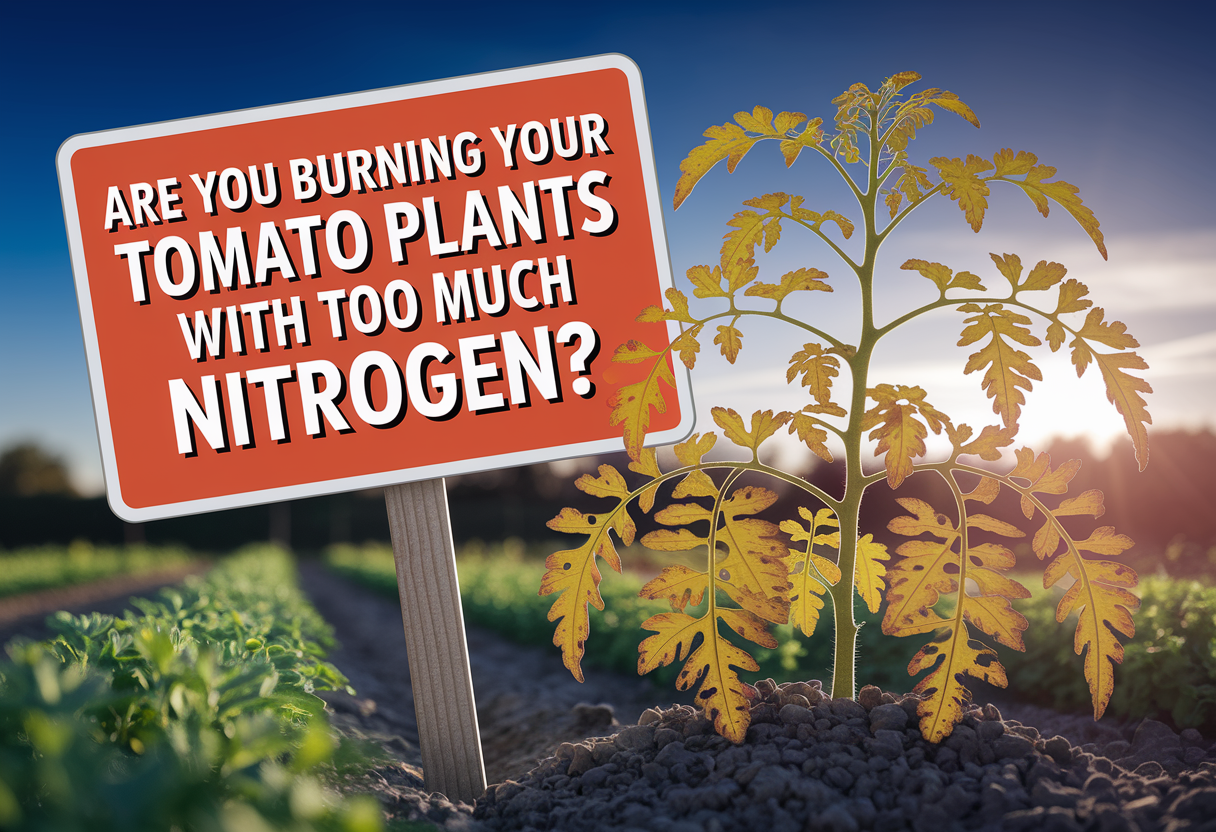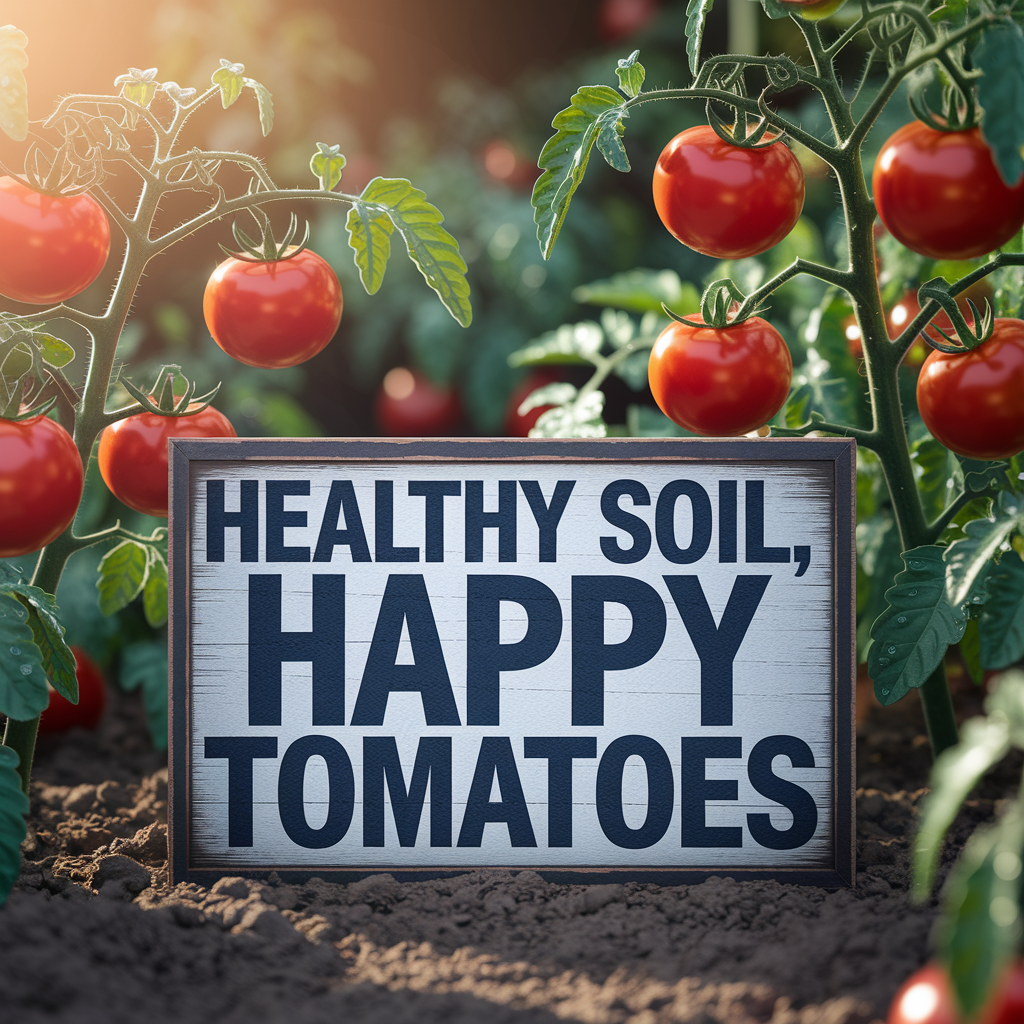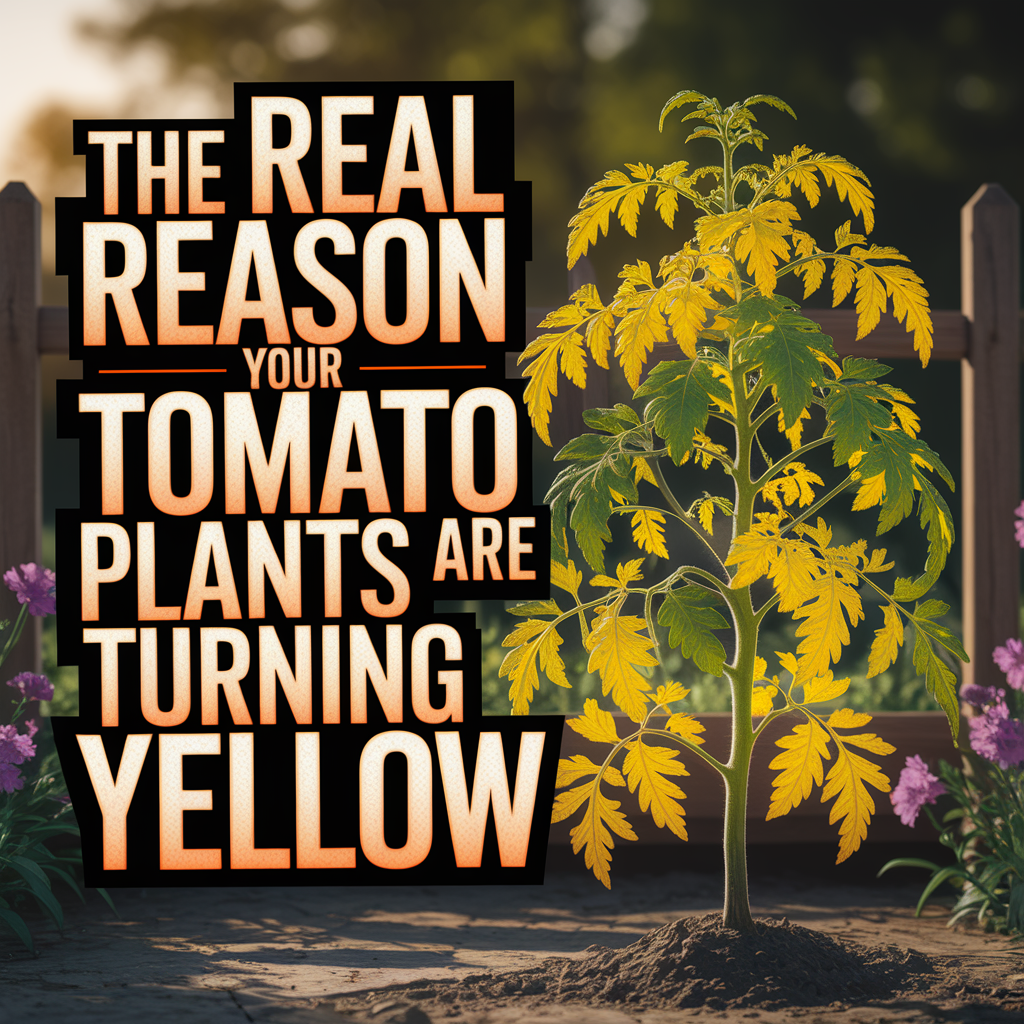
The First Time My Tomato Plant Turned Yellow (And I Freaked Out)
The first time I saw my tomato plant turning yellow, I thought I had completely killed it. One day it looked fine, the next—bam—half the leaves were pale, droopy, and just… sad-looking. I didn’t know what to do, so I did what most beginners do: I panicked and watered it more. (Spoiler alert: that was not the solution.)
If you’ve found yourself asking, why are my tomato plants turning yellow? — I’ve been there. It’s one of the most common tomato plant problems out there, and the good news is, it’s usually fixable. The bad news? It could be a few different things, and figuring out the cause is like playing tomato detective.
That’s why I’m writing this—to break down everything I’ve learned from my own yellow-leaf disasters so you don’t have to learn the hard way like I did. Whether you’re growing in a garden bed, raised planter, or container, yellow tomato leaves are your plant’s way of saying something’s off. The sooner you figure out what it’s asking for, the faster you can get back to growing healthy, green plants and juicy tomatoes.
Before you reach for the hose or a bag of fertilizer, let’s talk about what could actually be going wrong.
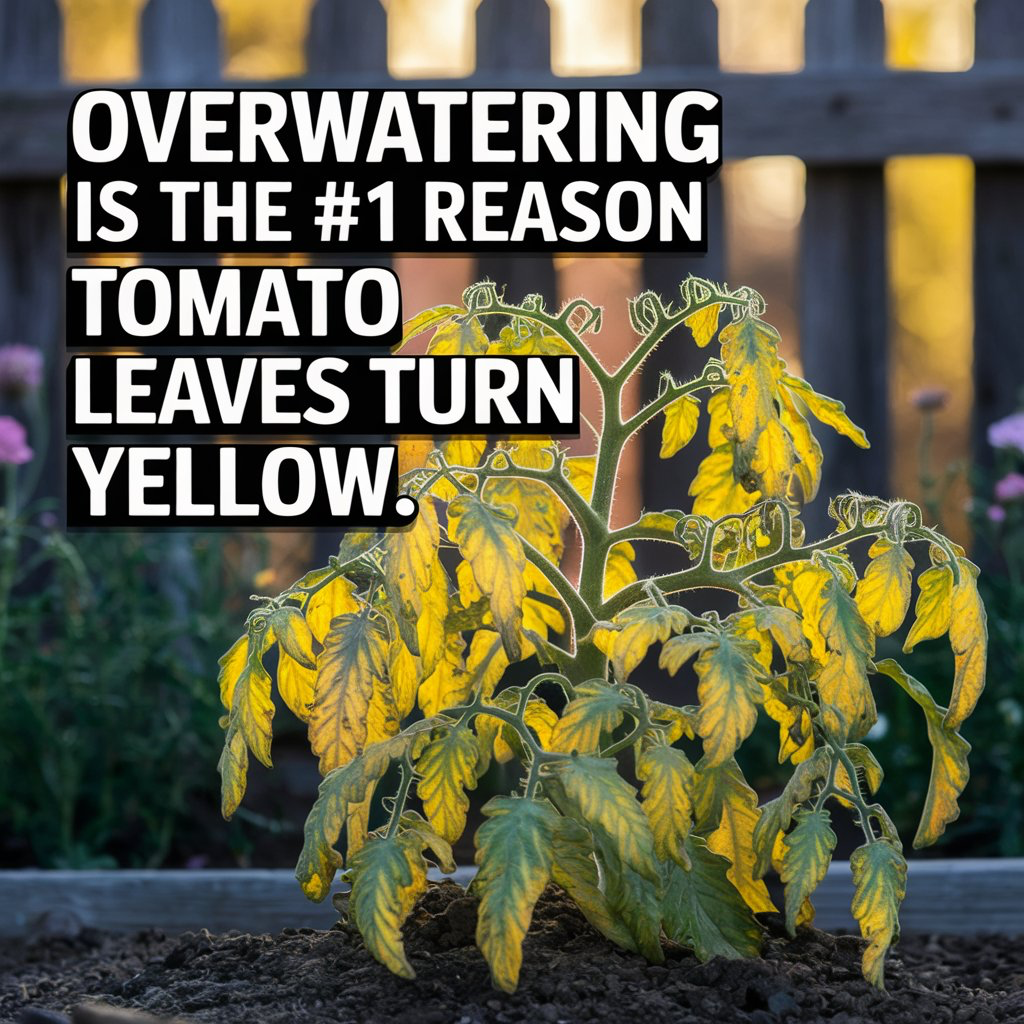
Why Are My Tomato Plants Turning Yellow? (It’s Usually One of These)
Here’s the honest truth: when tomato leaves start turning yellow, it’s not always just one simple cause. But in most cases, I’ve found it comes down to one of a few usual suspects—overwatering, poor nutrition, lack of sunlight, pests, or disease. And sometimes, it’s a combo of a couple of those all happening at once.
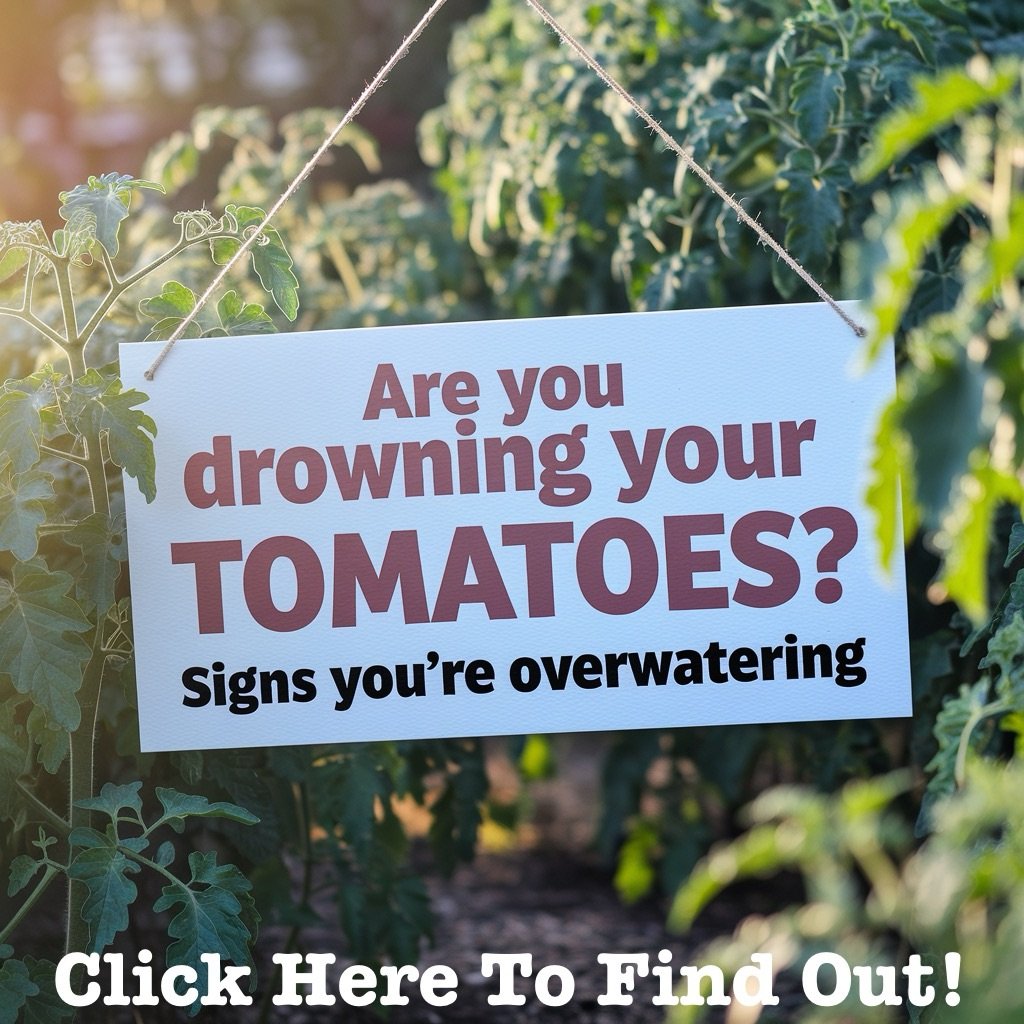
Let’s walk through the biggest reasons your tomato plant might be looking sickly and yellow:
1. Overwatering
I’ll be real—this is the most common cause I’ve seen (and done myself). Tomatoes like moist soil, not soaked. Constantly wet roots can suffocate the plant and cause the leaves to yellow, especially at the bottom.
You can learn more about watering properly in our beginner tomato growing guide where I share exactly how I fixed my watering habits.
2. Nutrient Deficiency
If your tomato plant isn’t getting enough nitrogen or other key nutrients, the older leaves (usually at the bottom) will turn yellow first. In my case, I once planted in cheap potting mix without fertilizing. Bad move. Once I added a balanced fertilizer, the plant bounced back.

3. Lack of Sunlight
Tomatoes need full sun—6 to 8 hours daily. If your plant’s in a shady spot, it’ll struggle to photosynthesize properly, which can show up as yellowing leaves.
4. Pests or Disease
Sometimes yellowing is a sign of a larger issue like fungal disease or a pest problem. If the yellow leaves are spotted, curling, or have black edges, it might be more than just a watering issue.
Don’t worry—I’ll break down each of these in detail in the next sections. But if you’re asking “why are my tomato plants turning yellow?” right now, there’s a good chance one of these four things is behind it.
Let’s dive deeper into the first and most common cause: overwatering.
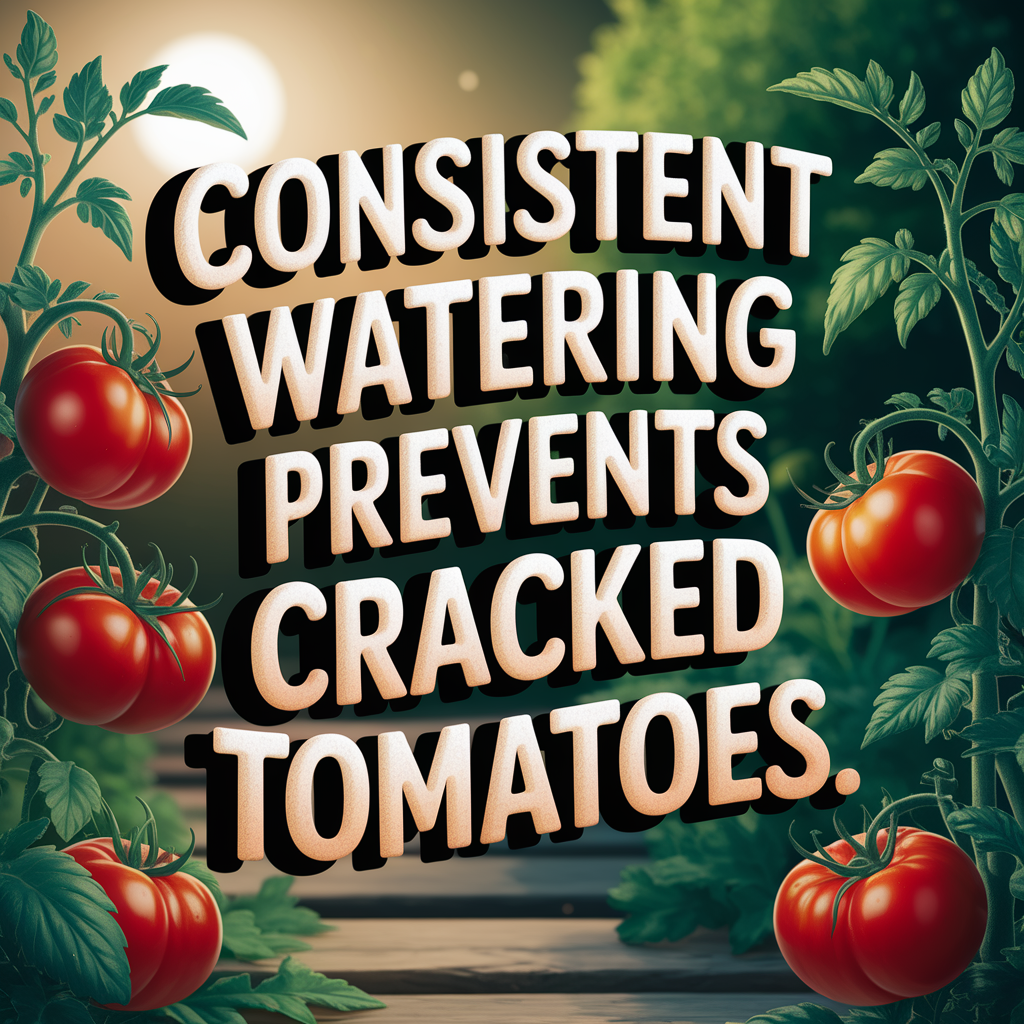
Overwatering: The Silent Killer of Tomato Plants
I used to think I was helping my tomato plants by watering them every day. Sometimes twice a day, especially if it was hot outside. I mean, more water = happier plants, right? Nope. Not with tomatoes.
If you’ve been wondering why are my tomato plants turning yellow, the very first thing I recommend checking is your watering habits. Overwatering is one of the most common—and sneakiest—mistakes new growers make. I say “sneaky” because sometimes your plant looks okay for a while… until the roots start to suffocate and the leaves begin to yellow from the bottom up.
Here’s how I learned to spot it:
- Mushy, soggy soil that never seems to dry out
- Leaves that look droopy and yellow at the same time
- Yellowing that starts on the lower leaves and slowly works its way up
- A plant that just seems “off” even when you’re doing everything else right
What helped me was getting into a consistent watering rhythm based on what the soil needs—not just what the weather’s doing. I use the finger test now (stick your finger an inch or two into the soil). If it feels dry, water. If it’s moist, skip it.
Also, proper drainage is a big deal. If you’re growing tomatoes in containers, make sure your pots have drainage holes. I once used a decorative pot with no holes because it looked nice. My tomato plant drowned in style.
Overwatering starves the roots of oxygen and opens the door to root rot and fungal disease, which only makes things worse. If you think you’ve overwatered, back off for a few days, let the soil dry out a bit, and don’t panic. Tomato plants are surprisingly tough when you give them room to breathe.
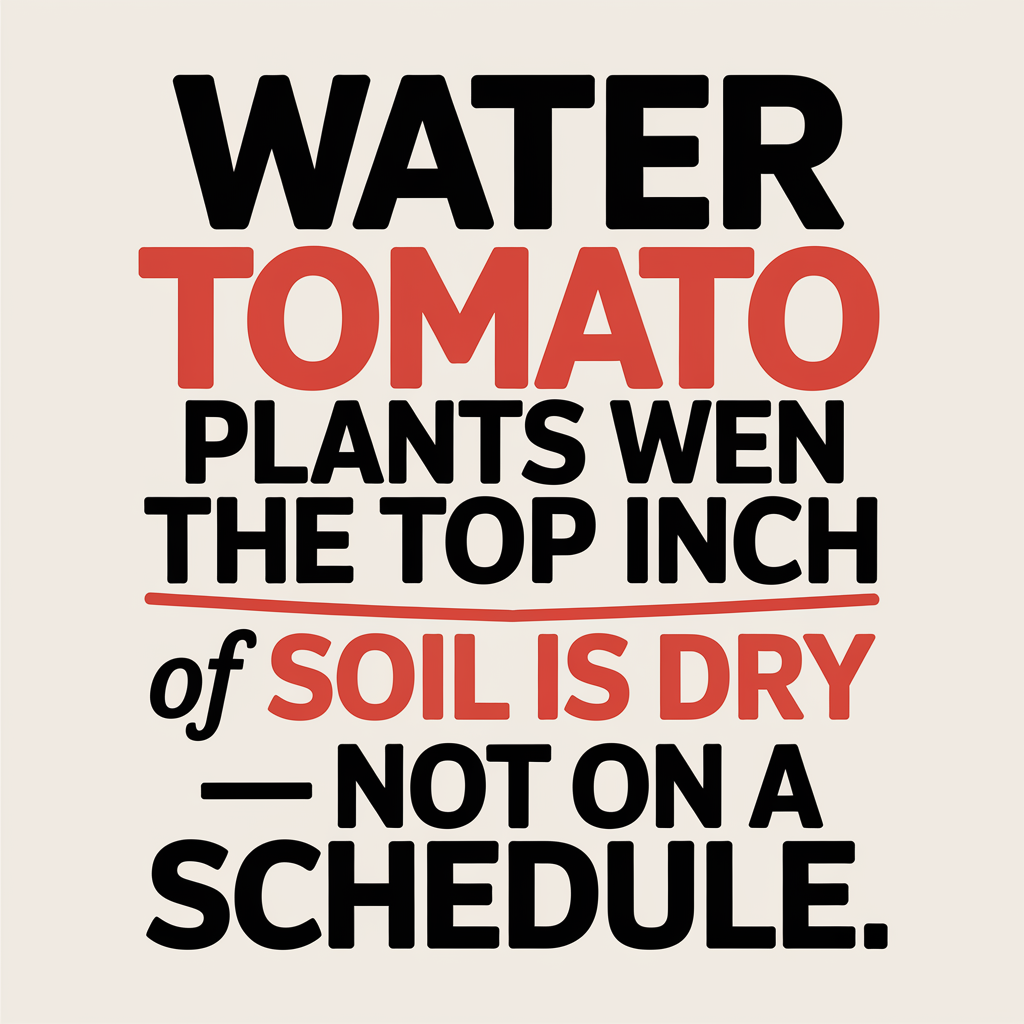
Underfeeding Tomatoes: The Nutrient Problem You Don’t Notice at First
When my tomato plant started turning yellow and I ruled out overwatering, I assumed it was something complicated or scary. Turns out, it was something really basic—I wasn’t feeding it.
Tomatoes are heavy feeders. If they don’t get enough nutrients, especially nitrogen, their lower leaves will start yellowing. And it doesn’t happen overnight. It creeps in slowly, so if you’re not paying attention, you might not notice it until your plant already looks sick.
Here’s how I spot a nutrient deficiency now:
- Yellowing starts from the bottom up
- New growth is pale and weak-looking
- Leaves are small, curled, or thin
- Plant looks overall “tired” instead of vibrant
Once I started using a balanced vegetable fertilizer (and later, tomato-specific fertilizer), my plants got greener almost immediately. These days I feed about every two weeks during the growing season, especially once the fruit sets in.
Compost is also gold. I mix it into my soil at the beginning of the season and occasionally make compost tea. Worm castings, if you’ve got access to them, are like nature’s multivitamin for tomato plants.
If you’re wondering why are my tomato plants turning yellow, and you’re confident your watering is under control, it’s time to consider the soil. A well-fed tomato plant has deep green leaves, strong stems, and enough energy to actually produce fruit—not just survive.
In the next section, we’ll talk about one of the sneakiest reasons your plant might be suffering: not enough sun.
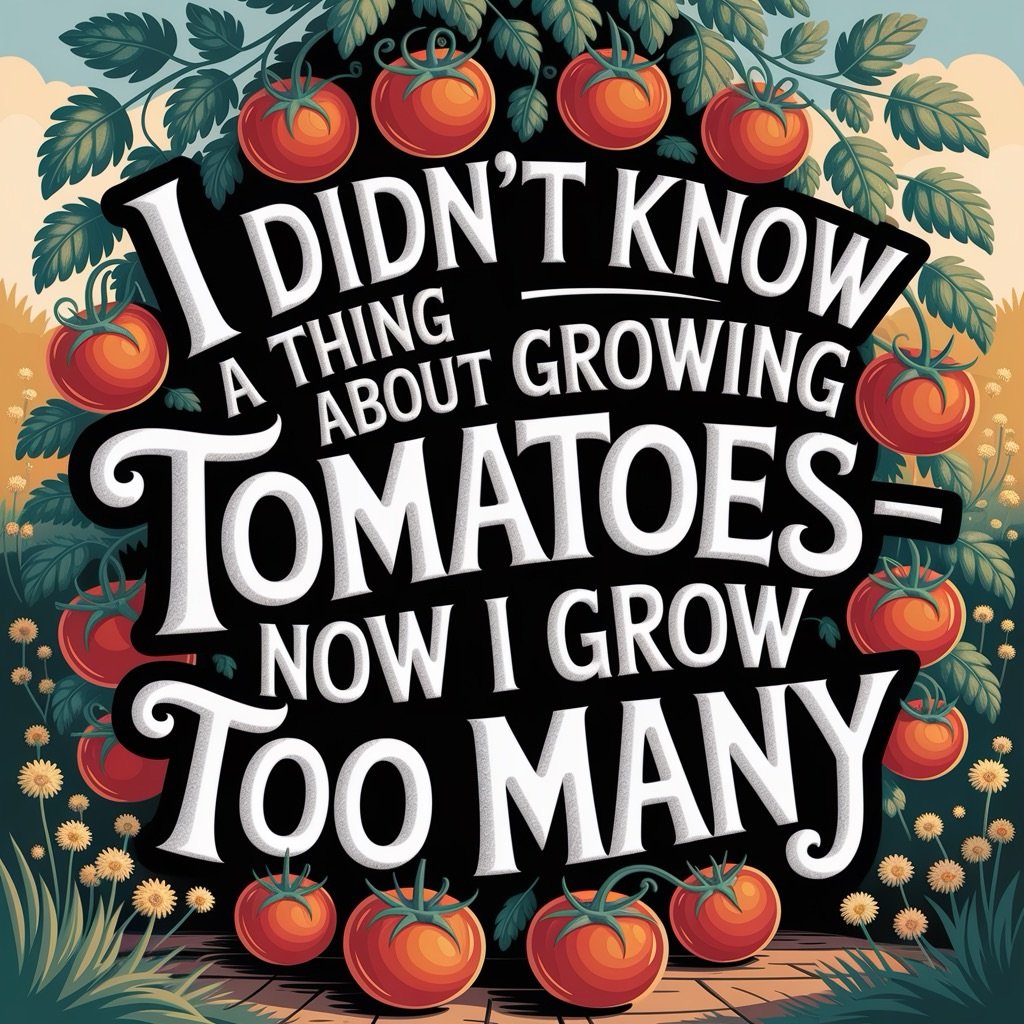
Too Little Sun = Sad, Yellow Leaves
Sunlight is like fuel for your tomato plant. Without it, nothing works right. And I’ll admit—this one snuck up on me. I had my first tomato plant in a spot that looked sunny enough, but when I actually tracked how much direct sun it got? Barely 4 hours a day.
If you’re asking why are my tomato plants turning yellow and you’ve already ruled out watering and nutrients, it’s time to look up. Literally.
Tomatoes need at least 6–8 hours of direct sunlight every single day. No exceptions. Anything less, and your plant’s growth slows down, the leaves start turning pale or yellow, and the whole thing starts to look weak and spindly.
Signs your tomato plant isn’t getting enough sun:
- Yellowing leaves, especially new ones at the top
- Leggy, stretched-out stems reaching toward the light
- Very little flowering or fruit set
- Leaves that look faded instead of vibrant green
Once I realized my tomato plant was basically living in partial shade, I moved it to the other side of the yard where it got full afternoon sun—and the change was fast. Within a week, the color improved, and new leaves started growing stronger and greener.
If you’re growing in containers, take advantage of the portability and chase the sun throughout the day. If you’re in a shady yard, try growing near a white wall or reflective surface that bounces light back onto your plants—it actually helps more than you’d think.
No fertilizer or watering fix can make up for poor lighting. Tomatoes are sun-loving plants, and when they don’t get what they need, yellow leaves are often their first cry for help.
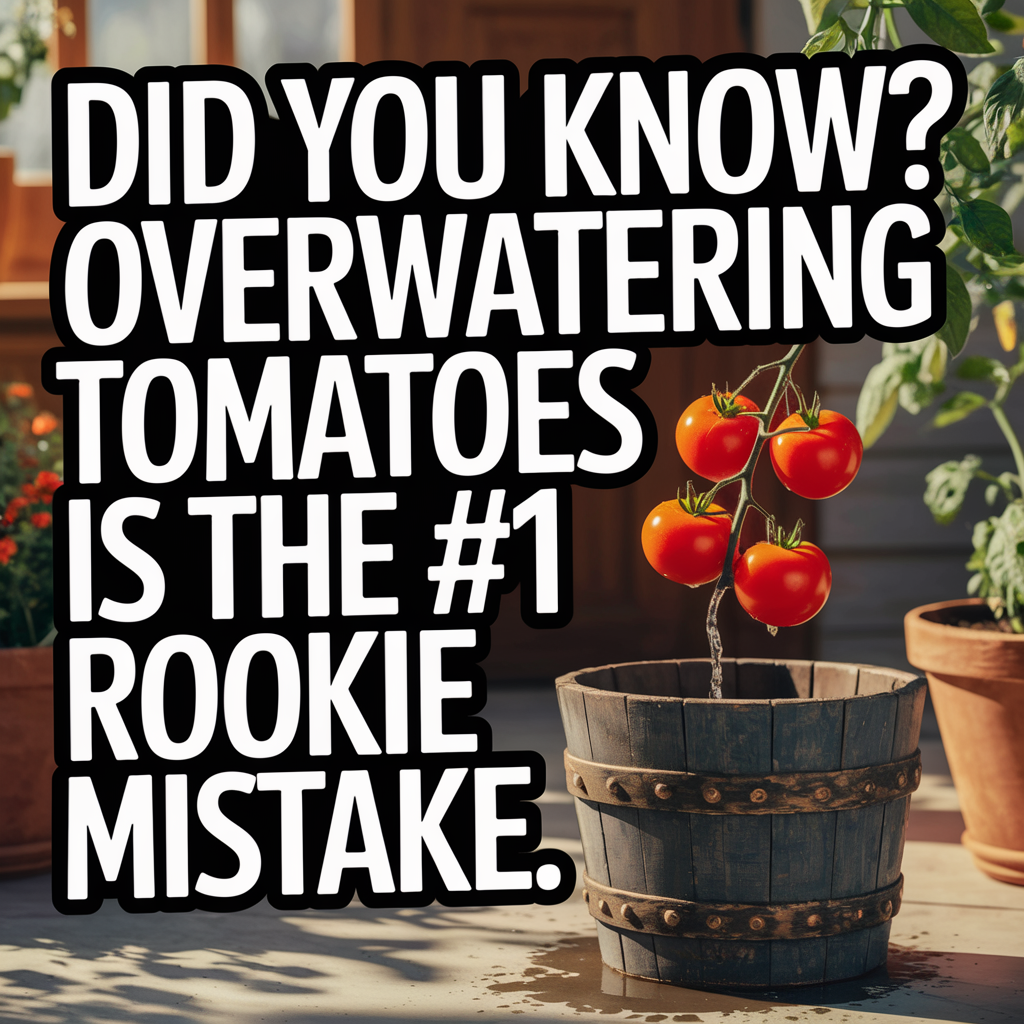
Fungal Diseases That Make Tomato Leaves Turn Yellow
Alright, this one is where things can start to sound scary—but don’t worry. I’ve had my share of fungal issues, and most of them were manageable once I caught them early. If you’ve been asking why are my tomato plants turning yellow and the yellowing is spreading fast, it could be disease.
The two most common fungal diseases I’ve dealt with are:
1. Early blight
Shows up as yellow spots with dark brown edges on the lower leaves. It starts near the bottom of the plant and works its way up. Left alone, it’ll strip your plant of leaves.
2. Septoria leaf spot
This one causes small, round yellow spots with gray centers, also starting on the lower leaves. It thrives in wet, humid conditions—like when you water from above and the leaves stay wet.
The first time I saw early blight on my plant, I thought it was just normal aging. I didn’t realize how fast it would spread. By the time I started trimming off infected leaves, half the plant looked like it had been in a tomato war zone.
Here’s how I handle it now:
- Remove affected leaves immediately
Always prune with clean scissors and never compost diseased material. - Improve airflow
I space my plants out better now and remove the lower leaves once the plant gets taller to keep air circulating. - Water at the base of the plant
No overhead watering. Ever. I use a watering can or hose with a wand to keep moisture off the leaves. - Use organic fungicides when needed
Neem oil or copper fungicide are what I reach for if things get out of hand. Early action is key.
Fungal diseases don’t mean your plant is doomed. But if you’re seeing yellow leaves with spotted or blotchy patterns, don’t wait. Trim, treat, and give your plant a fighting chance.
Coming up next: bugs. Yep… the gross kind. 🐛
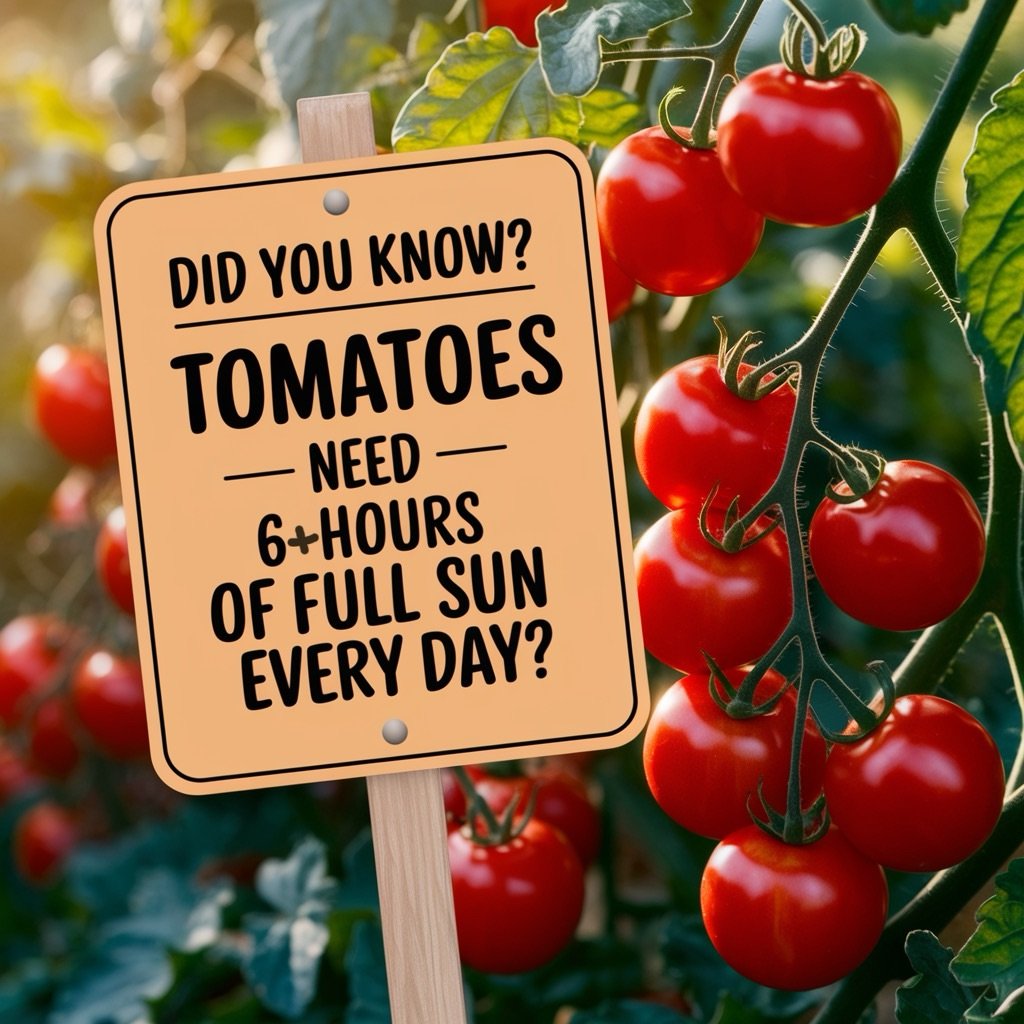
Pests That Damage Tomato Plants and Lead to Yellowing
Look, I love tomatoes—but apparently so do every bug in the zip code. The first time I noticed yellowing tomato leaves with tiny holes and curling edges, I thought it was a watering issue. Nope. I flipped a leaf over and found a whole colony of aphids having a party.
If you’re still wondering why are my tomato plants turning yellow, don’t overlook the possibility of pests. Some of the smallest critters can cause the biggest problems, and yellowing leaves are often the first warning sign.
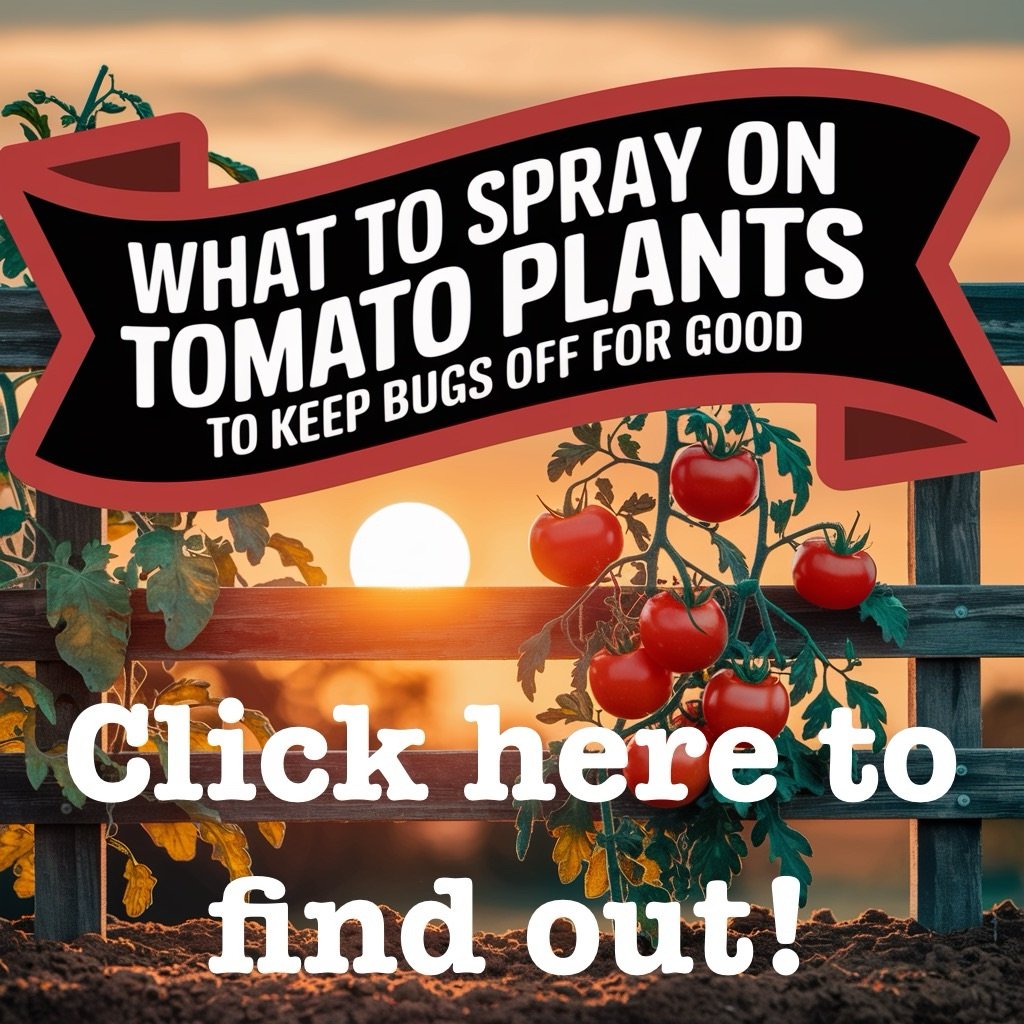
Here are the biggest troublemakers I’ve dealt with:
1. Aphids
These little green (or black) sap-suckers hang out on the undersides of leaves. They suck the life out of the plant and leave behind sticky residue called honeydew. Leaves start to yellow, curl, and drop.
Fix it: A strong blast of water knocks them off. I also use insecticidal soap or neem oil for bigger infestations.
2. Spider Mites
Super tiny and hard to spot, but you’ll know they’re around when you see tiny yellow speckles on the leaves, webbing, and slow plant decline.
Fix it: Spray the undersides of leaves with water daily, or use neem oil. Keep humidity up if possible—spider mites hate moisture.
3. Whiteflies
These tiny white bugs scatter like snowflakes when you shake the plant. They feed on leaves and cause them to yellow and drop.
Fix it: Sticky traps help, but insecticidal soap and regular inspections are your best defense.
4. Tomato Hornworms
These giant green worms can strip your plant of leaves overnight. They’re hard to spot but leave behind giant poop pellets and chewed-up leaves.
Fix it: Handpick them (yep, gloves help). One hornworm can do damage fast, so check daily if you’ve seen one before.
I check my tomato plants every other day during peak season. It’s a quick habit that’s saved me a ton of headaches. If your tomato plant is turning yellow and you see holes, curled leaves, or sticky residue, it’s time to inspect up close—because if pests are the problem, ignoring them won’t make them go away.

Bottom Leaves Turning Yellow? Here’s What That Means
If only the bottom leaves on your tomato plant are turning yellow, don’t panic just yet. In fact, this is one of the most common tomato plant issues I see—and I’ve learned it’s usually a sign of something normal or at least manageable.
Here’s what might be going on:
1. Natural Aging
As tomato plants grow taller, it’s normal for some older leaves near the bottom to yellow and die off. If the upper plant looks healthy and strong, this might just be the plant shedding old growth it no longer needs.
What I do: Snip off yellowing bottom leaves with clean scissors to improve airflow and reduce disease risk.
2. Lack of Sunlight
Lower leaves often get shaded by the upper canopy. Without sunlight, they can yellow and drop. This is a super commonreason for yellowing in bushy or crowded plants.
Fix it: Prune the plant for better light penetration. You can also consider spacing your plants out better next season.
3. Early signs of nutrient deficiency or overwatering
If yellowing starts low and slowly creeps upward, it could still be a nutrient or watering issue. I always check my soil moisture and feeding schedule if multiple lower leaves are turning yellow within a few days.
The key is this: if only the bottom leaves are yellowing and the rest of the plant looks great, you’re probably in the clear. But if the yellowing is spreading up the plant, or leaves are curling or spotted, it’s worth taking a closer look at watering, nutrients, pests, or disease.
Still asking why are my tomato plants turning yellow? Don’t worry—next I’ll share the exact steps I took to bring my yellowing tomato plants back to life.
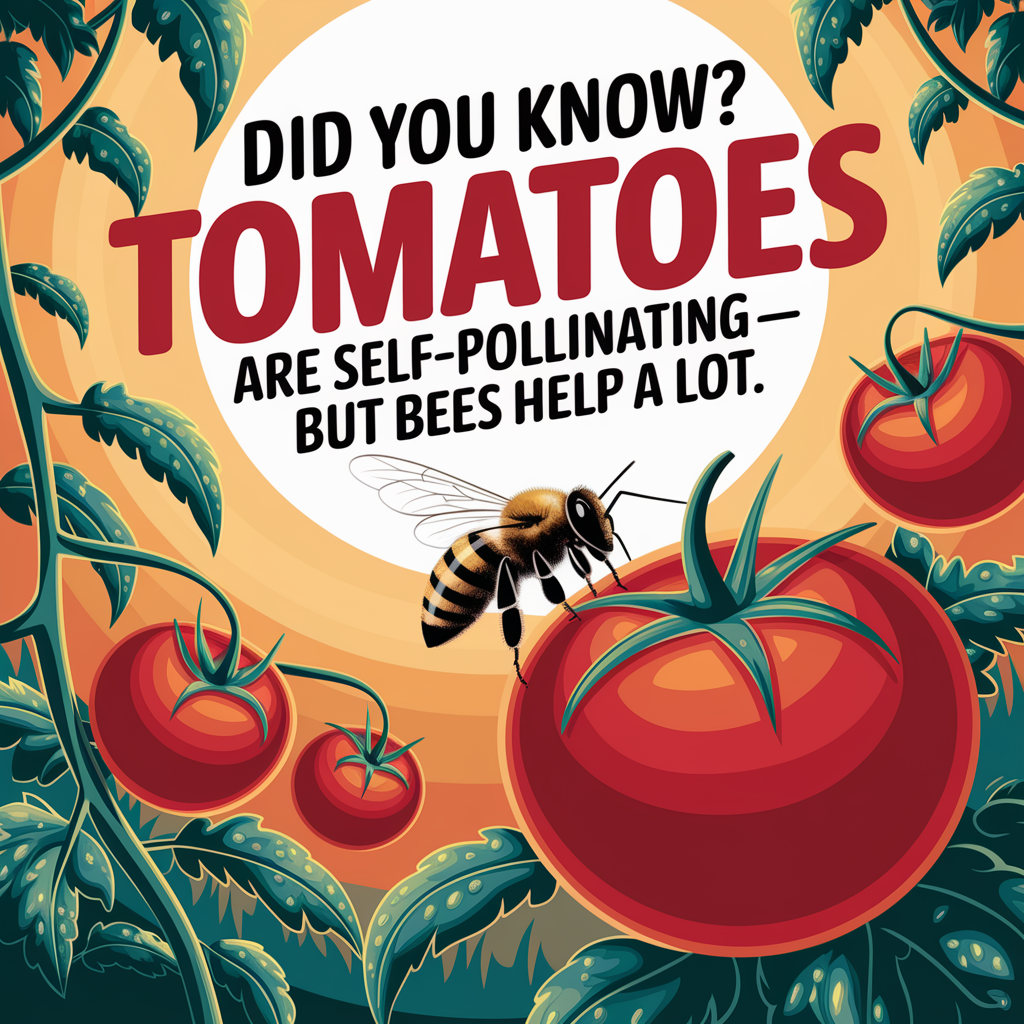
How I Fixed My Yellowing Tomato Plants (And What I’d Do Again)
After losing a couple of plants to yellow-leaf disasters, I finally stopped throwing random solutions at the problem and started paying attention to what the plant was actually telling me. The good news? Once I made a few small changes, things turned around fast.
If you’re stuck wondering why are my tomato plants turning yellow, here’s what I did to fix it—step by step—and what I still do every season to keep yellowing leaves from taking over.
1. Checked soil moisture daily
I stopped guessing and started doing the finger test. If the top inch of soil was dry, I watered. If not, I left it alone. That simple habit cut down on overwatering immediately.
2. Trimmed the yellow leaves
Even if the cause was being fixed, the yellow leaves weren’t going to turn green again. I pruned them off, especially ones near the bottom. It made the plant look cleaner, boosted airflow, and helped me spot new problems faster.
3. Added a balanced fertilizer
I used a vegetable-friendly fertilizer with nitrogen, phosphorus, and potassium. I’ve also mixed in compost and worm castings. Within a week, the plant looked greener and happier.
4. Moved container plants to a sunnier spot
Once I realized one of my pots only got morning light, I rolled it to the opposite side of my porch—and that plant doubled in size in two weeks. Seriously.
5. Treated for pests early
Anytime I saw spots, curled leaves, or white dots under the leaves, I hit the plant with neem oil. Not after researching for an hour. Not after checking six Facebook groups. Right away. And it worked.
6. Gave it time
This was the hardest part. Once I adjusted the light, water, and feeding, I had to back off and stop fussing with it. Plants take time to recover. But within a couple of weeks, new growth came in clean and green—and I finally stopped stressing over every yellow spot.
Sometimes the fix isn’t just one thing. It’s a combo of small changes that work together. The key is staying consistent and not giving up just because your plant hits a rough patch.
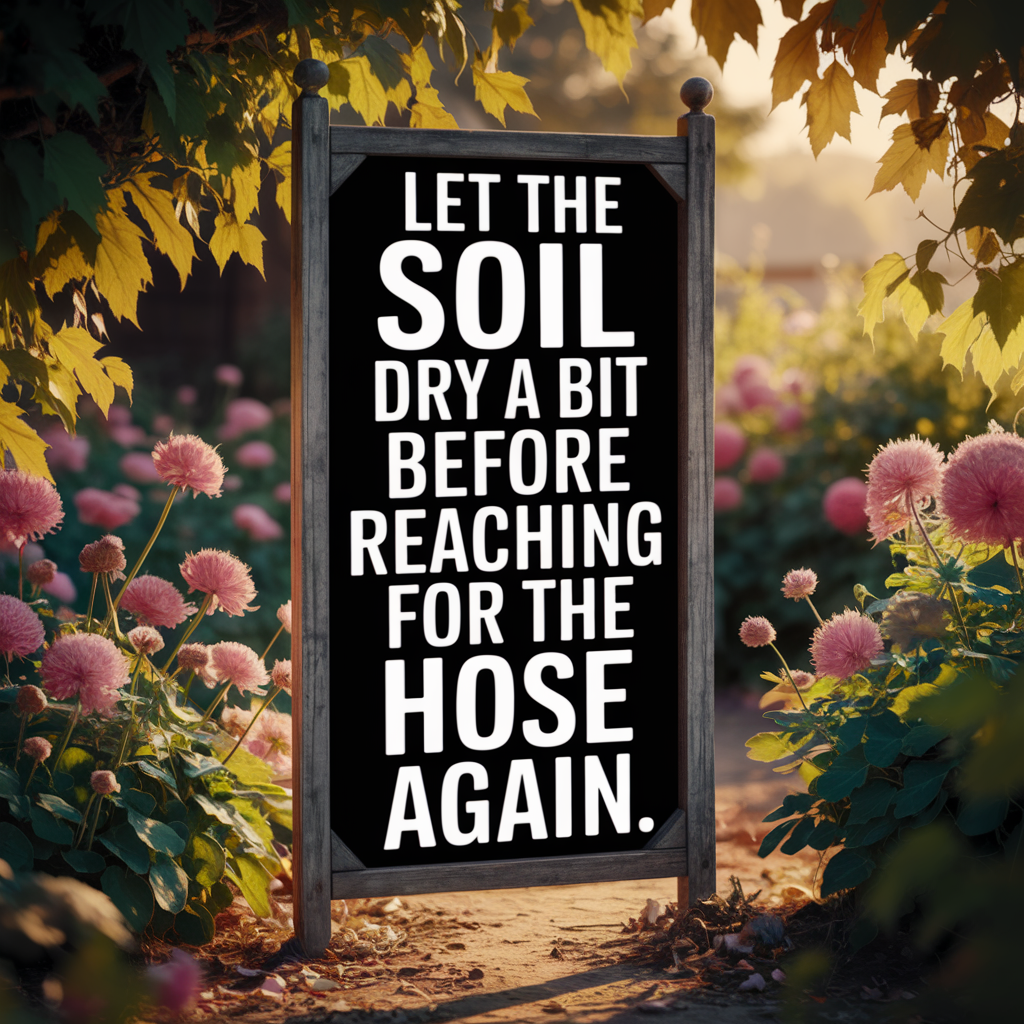
Still Wondering Why Your Tomato Plants Are Turning Yellow? Start Here
If you’re still sitting there thinking, why are my tomato plants turning yellow, I get it. I’ve been there, digging through forums and second-guessing everything from watering to what pot I used.
Here’s what I always come back to:
- Start with the basics: Sun, soil, water, and space.
- Look for patterns: Is it just the bottom leaves? Are there spots? Is it spreading fast?
- Act early, but don’t panic: Most problems can be fixed if you catch them in time.
If you’re new to growing tomatoes and this is your first plant, I highly recommend checking out my full beginner’s guide to growing tomatoes at home — it breaks down exactly what helped me avoid these issues from the start the second time around.
And hey, if yellow leaves happen, it doesn’t mean you’ve failed. It just means your plant’s trying to tell you something—and now, you’ll know how to listen.
Keep growing, keep learning, and don’t be afraid to mess up. That’s how I got better, and trust me, your best tomato harvest is still ahead of you. 🍅

As an Amazon Associate we earn from qualifying purchases through some links in our articles.

